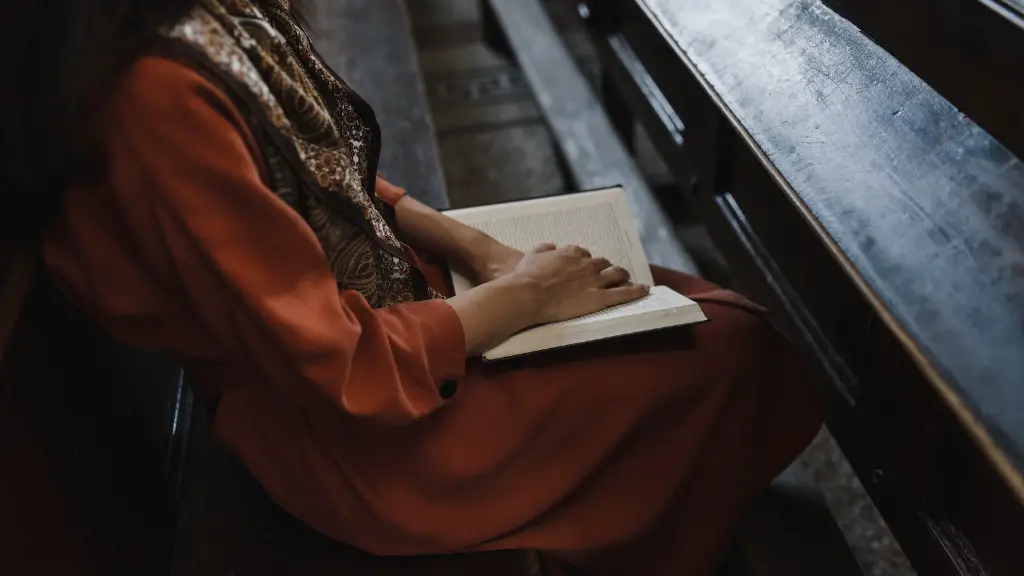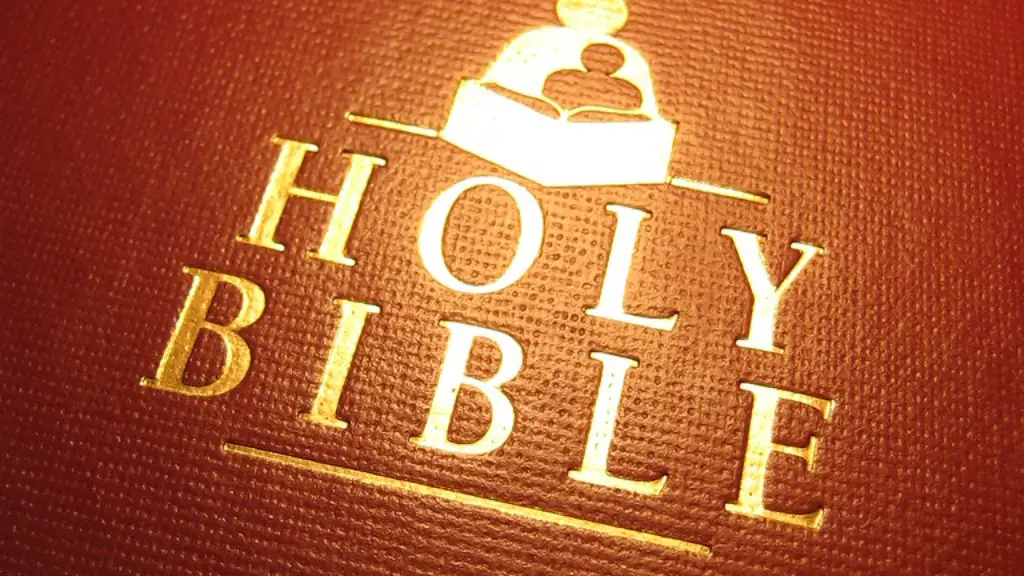Who Is Gabriel In The Bible?
The angel Gabriel appears many times throughout the Bible. In the Old Testament, Gabriel is mentioned three times. He is first mentioned in Daniel 8:16 as the one who appears to the prophet Daniel and explains a vision related to the end of days. He then appears to Zechariah when the angel announces that Zechariah’s wife will give birth to a son in Luke 1:19. Most notably, in the New Testament, Gabriel visits the virgin Mary and announces the birth of Jesus to her in the Annunciation narrative of Luke 1:26-38.
Gabriel is traditionally believed to be the archangel who serves as a messenger to both humans on Earth and to God himself. The name Gabriel means “God is my strength” in Hebrew, reflecting the notion that Gabriel is a powerful figure with God’s full strength and power. Gabriel is also identified as one of God’s highest ranking angels, often called the “Prince of Angels.”
Biblical scholars have long studied the Gabriel’s role in the Bible. Dr. A. Nichols, an expert in the theological field, explains that “Gabriel’s role as a messenger is clear when one examines the Bible. In both the Old and New Testaments, Gabriel is sent by God to fulfill a special mission and helps bring about a divinely-orchestrated event.”
Rather than simply appearing to humans directly, God often sends Gabriel to deliver his messages, thereby conveying his message to those present in a more powerful and direct way. For example, in the Annunciation narrative, Gabriel explains to Mary that she will become the mother of Jesus, God’s only son. By sending Gabriel, God conveys his powerful will and message to Mary in a way that Mary is able to comprehend and acknowledge.
Not only does Gabriel bring important messages, but he is also described as a figure capable of miraculous acts. Jesus’ physical ascension is believed to have been a miraculous act of Gabriel. In Luke 24:51, the verse states that the disciples “were looking intently up into the sky as [Jesus] was going, when suddenly two men dressed in white stood beside them.”
The two men are believed to be angels- most likely Gabriel and Michael- and were sent by God to watch over Jesus’ ascension. In another miraculous act, Gabriel announces the future birth of a son to Zechariah and his wife Elizabeth. He explains that the son will be a prophet and will “go before the face of the Lord [in] the spirit and power of Elijah.”
Gabriel is a prominent figure in both the Old and New Testaments, fulfilling his role as a messenger from God and sometimes even performing miraculous acts. In addition to the verses mentioned above, there are significant mentions of Gabriel in the biblical books of Ezekiel, Hagar, and Tobit. As such, many believe him to be one of the most prominent archangels in the Bible.
Gabriel in Jewish, Christian, and Muslim Beliefs
Gabriel is revered as a powerful spiritual figure in Jewish, Christian, and Muslim traditions. In Jewish faith, Gabriel is seen as an angel of mercy and justice, and he is mainly associated with the prophets of the Tanakh. In Christian traditions, Gabriel is oftentimes referred to as the angel of peace and joy, and his annunciation of Jesus’ imminent birth to Mary is the basis of the celebration of Christmas.
In the Islamic faith, Gabriel is one of the four main archangels and is believed to be the messenger angel of God who revealed the Quran to the prophet Mohammad. Throughout all of the three Abrahamic faiths, Gabriel is seen as a symbol of the divine presence, conveying God’s messages to both humans and angels alike.
Interpreting Gabriel’s Role in the Bible
At the same time, interpreting Gabriel’s role in the Bible requires careful examination and interpretation. Dr. Paul Davies, a theologian at Harvard University, states: “Many readers struggle to unravel Gabriel’s purpose in the Bible. To adequately interpret Gabriel’s role, it is important to understand the socio-cultural and religious context of the time period in which the narrative was written.”
In the Annunciation narrative, Gabriel is described as speaking with a “majestic voice” to Mary. By doing this, Gabriel places himself in a position of authority, implying that his announcement of Jesus’ upcoming birth will be accepted without question.
At the same time, Gabriel’s presence also reflects the commitment of the divine towards Mary. As an angel of God, Gabriel is a powerful figure with whom Mary is capable of communicating. Gabriel’s presence thus serves as a reminder of the divine love and protection Mary will receive from God.
Gabriel’s Status in Art and Popular Culture
The figure of Gabriel has long served as a powerful symbol in art, literature, and popular culture. In Christianity, Gabriel is depicted in paintings as a powerful angel, often shown with a trumpet to announce the coming of Jesus Christ. Gabriel is also present in literature, appearing prominently in Milton’s Paradise Lost.
In popular culture, Gabriel has recently taken a prominent role, with a constant surge of films, television shows, and books featuring the figure. In the popular television series The CW Charmed, the character Gabriel is portrayed as a powerful angel with a beautiful yet daunting presence.
Modern Day Interpretations of Gabriel
In modern day interpretations of Gabriel, there is an emphasis on his role as an angel of mercy and justice. Though Gabriel is often shown as a powerful archangel with mystical powers, many scholars draw attention to the fact that he is a figure capable of understanding, mercy, and reason.
Through his different interactions with characters throughout the Bible, Gabriel conveys messages of comfort and hope, serving as a figure who can provide insight and guidance. The character of Gabriel thus reflects the divine’s justice, mercy, and grace.
Contemporary Understandings of Gabriel
Most importantly, contemporary understandings of Gabriel show that the role of God’s angels in our lives is just as relevant as it has ever been. Even in these modern times, Gabriel is seen as a messenger, an interpreter, and a guide, conveying God’s will and providing comfort and understanding to those in need of it.
And though Gabriel is an ancient figure, he still remains a powerful and relevant force today, appearing in popular culture, art, and literature to remind us of the presence of God in our lives.
Mystical Power of Angel Gabriel
The mystical power of Angel Gabriel has long been embraced by many cultures and faith traditions throughout history. In some African cultures, stories of Gabriel and other angelic figures are often told in the oral tradition and are believed to represent protectors of the people. In Eastern religions, Angel Gabriel’s strong presence is also noted, expressing his role as a messenger between God and humanity.
Angel Gabriel’s mystical power is also reflected in other cultures as well. In ancient Chinese folklore, Gabriel is seen as a messenger of light and a figure of guidance. In Hinduism, Gabriel is often associated with Durga, a divine figure representing strength and protection.
Spiritual Significance of Gabriel
The presence of Angel Gabriel throughout history and across various cultures shows that this angelic figure has maintained a deep spiritual significance for many. Faith leaders and biblical scholars emphasize Gabriel’s role as a messenger and guide, showing that the angel remains a powerful presence to both humans and divine figures.
By reflecting on Gabriel’s past and present roles in the Bible, art, literature, and popular culture, one can gain a better understanding of how the power of God’s messengers remains relevant in our modern lives. Through Gabriel, God conveys a powerful message: that He is always present, always unifying us in spirit, and providing us with protection and guidance.


